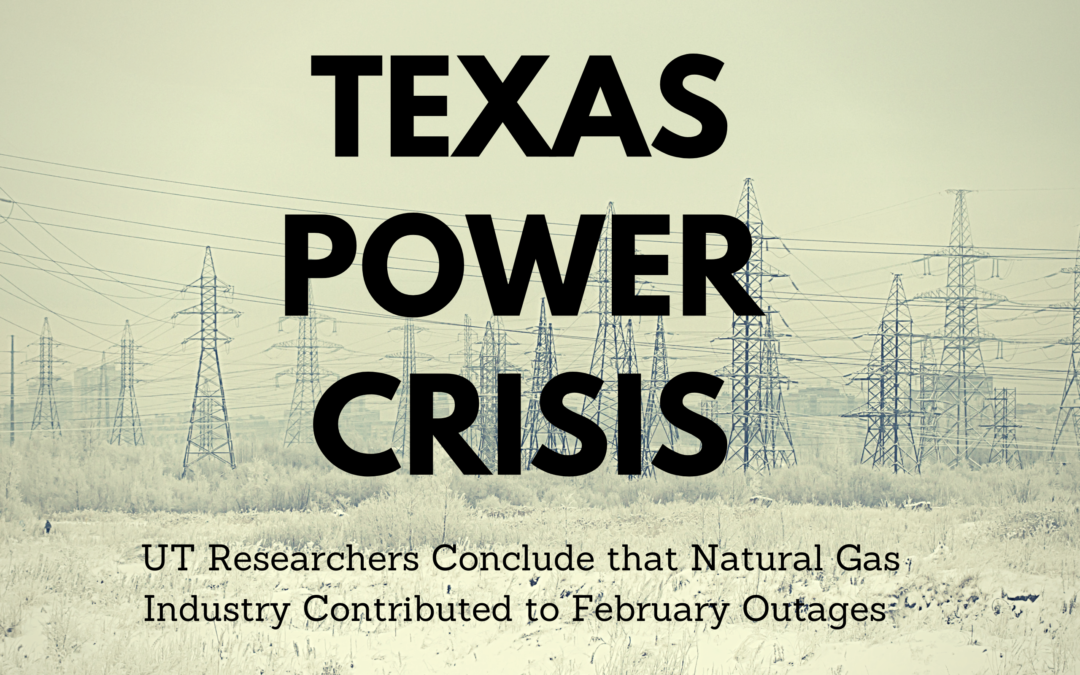Some critical natural gas units participated in a program allowing for electricity to be cut to them during the outages, according to research team. This would have made matters worse.
________________________________________________
Although generation technologies of all sorts failed during February’s statewide power outages, losses within the natural gas supply system greatly exacerbated the crisis, according to new research from the University of Texas.
The UT researchers also determined that some critical natural gas units participated in a program that allowed for electricity to be cut to them during the outages. This would have made matters worse.
In all, more than 4 million Texans lost power Feb. 13-17 — during Winter Storm Uri — and more than 200 Texans lost their lives. The outages and related energy market disruptions also caused billions of dollars in financial harm.
The University of Texas released the new findings on July 13 as part of a 101-page report funded in part by the Texas Public Utility Commission. In conducting the study, a team of 12 researchers from UT’s Energy Institute examined both public data and confidential ERCOT data — including data about power plant performance during the winter storm.
“The goal of the report is really to provide a common basis of fact and educate the ongoing public debate on how we can avoid similar crises in the future,” explained Department of Economics researcher Jay Zarnikau in a press release.
The team’s new research confirms previous findings that power generation technologies of all sorts failed during the winter storm. Inadequate weatherization caused many of the failures, with several power plants dropping offline at temperatures above their stated minimum temperature ratings.
However, the researchers also identified specific problems with the natural gas supply system, and reported that these problems would have undermined the operational ability of crucial electricity generators. The researchers found that some of these natural gas supply problems began even before the outset of the winter storm.
CONTRADICTS GAS INDUSTRY NARRATIVE
Representatives of the state’s main oil and gas trade group consistently have pointed the finger back at the electric industry for natural gas supply disruptions during the storm. The trade group has argued that many natural gas units went offline because they lost electricity during the storm, and the trade group similarly has downplayed problems with the natural gas plants themselves. However, the UT researchers found that a lack of weatherization among natural gas units was an important factor.
“Days before ERCOT called for blackouts, natural gas was already being curtailed to some natural gas consumers, including power plants,” the report’s authors wrote. “Natural gas output started to decline rapidly before the electricity forced outages began early on February 15, with production declining about 700 million cubic feet per day from February 8-14. This decline is likely due to weather-related factors and not a loss of power at natural gas facilities.”
On Feb. 17, Texas’ natural gas production fell to 11.8 billion cubic feet per day — down from an average of 21.3 billion cubic feet during the previous week, according to the report. The researchers examined a sample of 27 natural gas processing plants and found that as many as 18 of them had zero output during the worst of the storm.
Significantly, the researchers likewise found that five critical natural gas units had voluntarily enrolled in ERCOT’s Emergency Response Service program. As a result, ERCOT would have cut electricity to them for part of the February crisis. In all, 67 electricity customers in the natural gas industry were both in the energy supply chain and voluntarily enrolled in the ERS program, according to the UT researchers.
“It seems inconsistent that critical infrastructure should also voluntarily allow themselves to be turned off when they are needed most.” said Joshua D. Rhodes, a research associate in mechanical engineering and one of the report’s co-authors.
Other findings:
- Natural gas prices, normally much less than $10 per Metric Million British Thermal Units, spiked to over $400 per MMBtu during the storm. Natural gas providers that were able to produce and transport gas reported windfall profits.
- Demand forecasts for severe weather were too low, and foresters failed to appreciate the severity of the storm. ERCOT’s most extreme weather scenario underestimated demand relative to what actually happened by about 9,600 megawatts.
- Planned generator outages were high, but not much higher than that assumed in planning scenarios. Total planned outage capacity was about 4,930 MW, or about 900 MW higher than in ERCOT’s “Forecasted Seasonal Peak Load” scenario.
The UT report was funded in part by the Public Utility Commission, via an interagency agreement. According to the UT Energy Institute, the PUC reviewed a draft of the report to ensure that no confidential information was inadvertently disclosed, but otherwise the report’s content and presentation was left to the discretion of the research committee.


